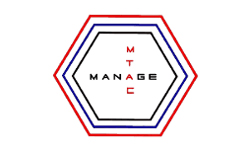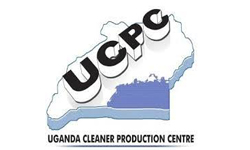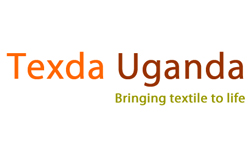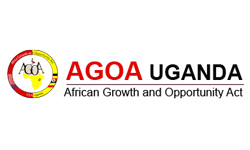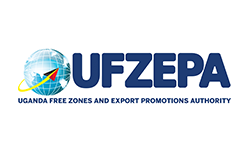Services Trade Information Paper
1.0 Introduction
Services trade is considered as the new frontier for economic development. A vast body of research demonstrates that services play an important facilitation role and contributes significantly to enhance the productivity and competitiveness of the entire economy. Services are enablers of development and growth as fundamental inputs to all economic activities and processes, both goods and other services.
Services account for 60% of economic activity worldwide – contributing to economic growth and job creation than any other sector. The services sector is currently the largest contributor to the national economy of Uganda, estimated at 50.2% to GDP in 2013/14. Services exports have been relatively steady especially during 2000 to 2012, where they registered an annual average trade growth of 18%. She service exports grew significantly from shs 5,385 billion in FY 2012/13 to shs 6,694 billion in FY 2013/14.
The Ministry of Trade, Industry and Cooperatives, with the assistance from the Regional Integration Implementation Programme (RIIP), is in the process of drafting a National Policy on Services Trade and Implementation Plan. The Ministry therefore undertakes to sensitize the public on ‘Services Trade’ through Information Series.
This first edition is meant to give a background of services trade within the multilateral Agreements, which among others sets the rules for trading between nations.
1.1 WHAT IS THE GATS?
The General Agreement on Trade in Services (GATS) is a multilaterally agreed framework agreements for international trade in services under the World Trade Organization (WTO). The GATS came into force on January 1995 as one of the major results of the WTO Uruguay Round of negotiations It establishes rules and disciplines on policies affecting access to services markets.
1.2 OBJECTIVES OF THE GATS:
Expansion of trade as a means for development
Achievement of progressively higher levels of liberalization
Respect for the right to regulate to meet national policy objectives
Facilitation of the increasing participation of developing countries in world services trade and expand exports by developing their export capacity and securing export opportunities in sectors of export interest to them.
1.3 THE STRUCTURE OF THE AGREEMENT
The Agreement includes rules/general obligation, and a framework for Members to make commitments to open particular services sectors for foreign services and services suppliers. The text of the GATS consists of 6 parts:
i Scope and Definition (Article I)
ii General Obligations (Articles II to XV)
iii Specific Commitments (Articles XVI to XVIII)
iv Progressive Liberalization (Articles XIX to XXI)
v Institutional Provisions (Articles XXII to XXVI)
vi Final Provisions (Articles XXVII to XXIX).
1.4 SCOPE AND DEFINITION
Services have unique characteristics that affect their tradability, which include intangibility, nonstorability, differentiation, and joint production, with consumer participating in the production process. The GATS covers measure affecting trade in services.
1.4.1 Sectoral classification
For the purpose of making commitments, a list of 12 services sectors and around 160 sub-sectors were development. This classification developed by the WTO Secretariat – ‘Services Sectoral Classification List’, know as ‘W/120’, is normally used in conjunction with related classification within the United National Central Product Classification (CPC).
1.4.2 How services are traded
As a further tool for making market opening commitments, the GATS sets out a four possible modes of supply of a service, or ways in which services can be traded. The definition covers not only the cross-border supply of services but also transactions involving the cross-border movement of capital and labour. Thus the four pronged – depending on the territorial presence, and glue for other economic activities of the supplier and the consumer and the time of the transaction; the modes are as follows:
Mode 1 (Cross Border Supply)
Mode 2 (Consumption Abroad)
Mode3 (Commercial Presence)
Mode 4 (Presence of natural persons)
Cross-border supply
Cross-border supply is the supply of a service from the territory of one Member into the territory of any other Member. This is the type of transaction similar to trade in goods.
For example: international transport and the supply of a service through telecommunication or mail. This includes business process outsourcing. Both supplier and customer are in their own countries, while the service crosses the border. For example, services like consulting can be provided by phone or over the internet.
Consumption abroad
This happens when the consumer moves to or visits the territory of another country where the supplier provides the service.
For example, international travel and tourism services can be provided in this way. It may also happen when the property of a consumer is sent abroad for servicing, as in the case of ship repair.
Supply through Commercial Presence
This involves direct investment in the export market through the establishment of a business there for the purpose of supplying a service.
For example, a law firm or financial services provider might open a branch office overseas or a hospital operator from Uganda having a subsidiary in Kenya.
Supply through the Movement of Natural Persons
Supply through the movement of natural persons means “the temporary entry of an individual in the territory of another Member for the purpose of supplying a service”. This person could be the service supplier himself or an employee of the service supplier. In both cases, the GATS definition covers only the temporary stay of such persons.
For example, an architect might travel overseas to work on designing a building there or a Ugandan physician practicing in Kenya.
Trade in services through these modes does not physically cross national border and thus is not affected by customs tariffs and other taxes applied to merchandise trade. Services trade is affected by domestic regulations in force and thus sensitive to behind the border, national regulations that affect the supply of services.
2.0 GENERAL OBLIGATIONS
General obligation applies directly and automatically to all Members of the WTO, regardless of the existence of sectoral commitments.
MFN Treatment
Under Article II of the GATS, Members are expected to give services and service suppliers from each Member country “treatment no less favorable than that accorded to like services and service suppliers of any other Member country“. This is referred to as the Most Favoured Nation (MNF) Treatment.
Members were allowed to take a one-time exemption for specific services sectors at the time they entered into the GATS. They could also obtain an exemption through the negotiation of a waiver under Article IX of the Agreement. Any such exemption was subject to review and should in principle not last longer than 10 years.
Transparency
WTO Members are required, inter alia, to publish all measures of general application and establish national enquiry points mandated to respond to other Member’s services information requests.
3.0 SPECIFIC COMMITMENTS
Each WTO Member is required to have a Schedule of Specific Commitments in Services. There are two main approaches to scheduling of specific commitments:
- All sectors and sub-sectors being liberalized are spelled out in the schedule; commitments regarding market access, treatment of foreign suppliers in specific sectors – Positive List Approach
- All sectors and measures (including discriminatory treatment) are to be liberalized unless otherwise specified in annexes containing reservations, or nonconforming – Negative List Approach
A services schedule consists of horizontal and sectoral sections.
It identifies the services sectors, sub-sectors or activities subject to Market Access and National Treatment obligations and any limitations attached to them.
The necessary indications must be entered with respect to each of the four different modes of services supply with regard to terms, limitations and conditions on market access;
Conditions and qualifications on national treatment;
Undertakings relating to additional commitments;
Where appropriate the time-frame for implementation of such commitments; and
The date of entry into force of such commitments.
3. 1 Specific Commitments on market access and national treatment
A specific commitment in a services schedule is an undertaking to provide market access and national treatment for the service activity in question on the terms and conditions specified in the schedule. When making a commitment a government therefore binds the specified level of market access and national treatment and undertakes not to impose any new measures that would restrict entry into the market or the operation of the service. Specific commitments thus have an effect similar to a tariff binding ‑ they are a guarantee to economic operators in other countries that the conditions of entry and operation in the market will not be changed to their disadvantage.
Market Access
Countries are prohibited from placing any quantitative limitations on services and service suppliers in any sector listed in their national schedule of commitments unless the country lists the measure in its schedule. The types of limitations covered by this requirement are enumerated in Article XVI(2). For example, a country is required to list:
Limitations it imposes on the number of services suppliers (e.g. no more than x foreigners per outlet), or the requirements of an economic needs test.
Limitations on the number of natural persons that may be employed in a sector or by a supplier, or the requirements of an economic needs test.
Limitations on the value of service transactions or assets e.g. assets of foreign banks limited to x% of total bank assets), or the requirements of an economic needs test.
Limitations on the total number of service operations or total quantity of service output (e.g. restrictions on broadcasting time available for foreign films), or the requirements of an economic needs test.
The legal form of the service supplier, measures which restrict or require specific types of legal entity or joint venture, or
Limitations on the participation of foreign capital in terms of maximum percentage limit on foreign shareholding or the total value of individual or aggregate foreign investment. (e.g. foreign equity limited to 49%).
National Treatment
National Treatment is defined as treatment no less favorable than that extended to a country’s own like services and service suppliers. In this context, countries commit themselves not to adopt any law or other measure that would give its services or services suppliers a competitive advantage.
In any sector included in its Schedule of Specific Commitments, a Member is obliged to grant foreign services and service suppliers national treatment unless it lists the non-conforming measure in its national schedule.
Typical National Treatment Limitation:
Discriminatory subsidies and other financial measures
Nationality of certain personnel and residency requirements
Licensing, qualification and registration requirements
Technology transfer/training requirements
Local content requirements
Prohibitions on land/property ownership
Limitations on insurance portability use of education grants, etc.
The national schedules conform to a standard format, which is intended to facilitate comparative analysis. A commitment therefore consists of eight entries, which indicate the presence or absence of market access or national treatment limitations with respect to each mode of supply as shown on the table below.
The first column in the standard format contains the sector or sub-sector which is the subject of the commitment; the second column contains limitations on market access; the third column contains limitations on national treatment. In the fourth column governments may enter any additional commitments, which are not subject to scheduling under market access or national treatment e.g. qualifications, standards, licenses and competition disciplines.
In nearly all schedules, commitments are split into two sections: First, “horizontal” commitments which stipulate limitations that apply to all of the sectors included in the schedule; these often refer to a particular mode of supply, notably commercial presence and the movement of natural persons. Any evaluation of sector‑specific commitments must therefore take the horizontal entries into account. In the second section of the schedule, commitments, which apply, to trade in services in a particular sector or sub-sector are listed.
3.2 Preparing a Schedule
Selecting sectors and sub-sectors for inclusion
Relevant considerations [underlying objectives]
Attract foreign investment [employment]
Foster competition [efficiency], broaden product
Choice and improve quality [consumer welfare], etc.
Consider need for modal exclusions or limitations
Relevant considerations [type of limitation]
Promote know how transfer [joint venture]
Requirements (mode 3), protect domestic employment
Quantitative limitations (modes 1,2,4), subsidies,
Prevent market disruption [phase-in commitments], etc.
3.3 Modification of schedules
Commitments can only be withdrawn or modified after an agreement on compensatory adjustments has been reached with affected countries, and no withdrawals or modifications were to be made until three years after entry into force of the Agreement. Such modifications of commitments were not to affect the application of most‑favoured‑nation (MFN) treatment. Commitments can however be added or improved at any time.
4.0 GATS V – DEPARTURE FOR ECONOMIC INTEGRATION
Article V of the GATS provides a mechanism for departure from WTO principles to allow for WTO Members to enter into regional economic integration agreement. In this regards, Uganda is a member of East African Community and Common Market for East and Southern Africa (COMESA), and will also negotiate services liberalization under phase II of the Tripartite Free Trade Area (COMESA-EAC-SADC).


